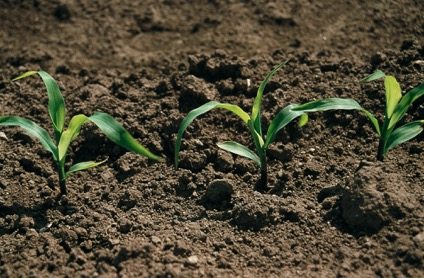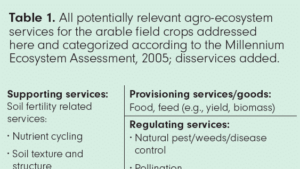Healthy soil can mean healthier crops and higher production. But how do you get it? Get the tips, from tillage to biodiversity.
What is soil health? Sometimes referred to as soil quality, there’s a lot of buzz around keeping soil healthy and productive.
But what does soil health really mean, and how can you maintain it on your farm?
Defining Soil Health in Agriculture
Soil health can be defined as the continued capacity of soil to function as a vital living ecosystem that sustains plants, animals and humans. In other words, soil health means sustainable productivity.
Why is this important to growers? Soil quality determines how well a soil will perform. With soil being the base of how crops are grown, a healthier soil means:
- Increased yield
- Nutrient cycling
- Water drainage and infiltration
- Strong structure for plant growth
Three main categories influence how healthy your soil is:
- Physical properties: soil structure, infiltration, available water and bulk density
- Chemical properties: organic matter, soil pH and soil electrical conductivity
- Biological properties: micro-organisms and earthworms
Keeping your soil healthy and productive can be challenging, but these three tips can put you on the path to success.
- Keep Tillage and Soil Disturbances at a Minimum
A simple but effective management practice: keeping soil disturbances to a minimum helps keep soil health strong. Whether this be a no-till system on your farm or using techniques like strip-till or vertical tillage, minimum tillage will help keep soil structure intact. Heavy tillage can lead to compaction, which in turn can create an environment that is disruptive for soil microorganisms, a key factor in soil health.
- Keep the Soil Covered with Cover Crops and Residue
Covering soil has positive effects on soil health. Cover crops or residue kept in the field helps intercept raindrops from impacting the top of the soil and its structure, holds in moisture, lowers soil temperature, and provides a habitat for soil micro-organisms and organisms that spend some of their time above ground. These cover crops and residues act as a two-for-one, as they also decompose and end up having their nutrients cycled back into the soil.
- Increase Soil Biodiversity with Seed Treatments
Biodiversity in your soil is important. It helps provide cycling for water and nutrients, which lead to a healthy and productive soil. Lack of biodiversity can limit the potential yield of any crop.
So how do you manage or increase your biodiversity? One of the newest technologies available is biological seed treatments. These seed treatments help place beneficial biologicals close to the emerging root on the newly planted crops. These biologicals can help improve nitrogen fixation or otherwise stimulate plant growth or promote soil biodiversity.
Poncho®/VOTiVO® 2.0 seed treatment from Bayer helps plants get off to a great start in that critical, early-season growing period when they are most vulnerable. Its revolutionary biological component enhances the microbial activity around the plant root. The result is more food for native soil microbes, which leads to greater nutrient availability and uptake by the growing plant. For growers, this means healthier soil, healthier plants and higher yield potential.
The Final Word on Soil Health
Soil health is a critical cog of a successful crop. While it may seem difficult to manage, remembering basic soil principals and using an array of practices can help increase your soil health and in turn, drive higher and more productive yields.













